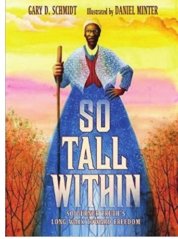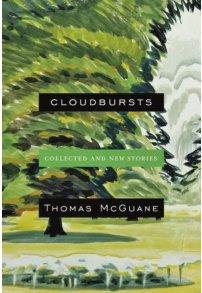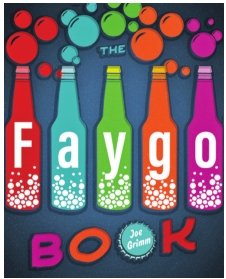

In case you missed them, here’s a helpful list of some of the best books of 2018.
Most of the books gathered here have a tight thematic relationship with our beloved mitten state.
Hands down two of the best books from this year’s mix chronicle the Flint water crisis. Anna Clark’s “The Poisoned City” uses a documentary journalistic style to detail what led up to the tragedy and the days that followed. Clark leaves no stone unturned, and will make you wonder why our government officials, all the way up to Gov. Snyder, did what they did.
Mona Hanna-Attisha uses her gut-wrenching memoir “What the Eyes Don’t See” to tell of her personal involvement and emotional turmoil after discovering the poisoning of Flint’s water.
She had been telling her patients the water is safe for drinking and mixing with baby formula when she learns the truth. Instead of just complaining, she sets out to prove that elevated lead levels in her patients are due to lead in the water as a result of a series of bungled steps in transferring the source of the water to the Flint River.
Two children’s picture books tell the story of two women whose presence in Michigan has made us a better place and a better people.
 Gary D. Schmidt’s “So Tall Within” is a biography of Sojourner Truth, a former slave who advocated for human rights issues in the late 1800s and early 20th century, in picture book style. Schmidt is a two-time Newbery Medal Award winner and he is paired with illustrator Daniel Minter. Truth spent her later years in Battle Creek, and in one notable speech to the Michigan Legislature she advocated against capital punishment.
Gary D. Schmidt’s “So Tall Within” is a biography of Sojourner Truth, a former slave who advocated for human rights issues in the late 1800s and early 20th century, in picture book style. Schmidt is a two-time Newbery Medal Award winner and he is paired with illustrator Daniel Minter. Truth spent her later years in Battle Creek, and in one notable speech to the Michigan Legislature she advocated against capital punishment.
The life of a contemporary artist and quiet advocate for the environment is covered in Lindsey McDivitt’s book about Gwen Frostic, “Nature’s Friend: The Gwen Frostic Story.” It tells the beautiful story of Frostic’s young life and her quest to become an artist. It also emphasizes Frostic’s entrepreneurial spirit, which led to her launching a major printing operation and art gallery in Benzie, Michigan, that still operates today.
For fans of Tom McGuane, one of Michigan’s greatest living writers — though he now resides in Montana — his most recent collection“ Cloud bursts” contains a near perfect, lifetime collection of his short stories.
McGuane, who hails from Grosse Ile and Michigan State University, will go down in history as one of the nation’s best short story writers.
Readers will have some fun while learning some valuable lessons about community responsibility from former Detroit Free Press writer and now MSU journalism Professor Joe Grimm’s “The Faygo Book.” Grimm takes you from the founding of one of the Midwest’s favorite soft drinks through its current life, while never losing track of the company founders’ dedication to the city of Detroit and its people. Grimm uses public records and private sources to tell of the rise of one of America’s favorite soda pops.
 Two other Detroit-centric books examine some interesting times in Michigan music history. Michael Zadoorian's fictional, semi-autobiographical novel, “Beautiful Music,” is a delightful trip down a memory lane in the ‘60s with a soundtrack folks of a certain age will all recognize. Zadoorian, who also authored the dark comedies “The Leisure Seekers” and “Second Hand,” has finally arrived after writing in obscurity for decades.
Two other Detroit-centric books examine some interesting times in Michigan music history. Michael Zadoorian's fictional, semi-autobiographical novel, “Beautiful Music,” is a delightful trip down a memory lane in the ‘60s with a soundtrack folks of a certain age will all recognize. Zadoorian, who also authored the dark comedies “The Leisure Seekers” and “Second Hand,” has finally arrived after writing in obscurity for decades.
Next up is “Hard Stuff ” by Wayne Kramer — guitarist of the kick-ass Detroit band MC5, which kicked out the jams in the revolutionary ‘60s. Kramer takes you through his ascension to one of the leaders of the legendary band to his descent into drug addiction and incarceration.
This year three excellent books delved into the culture of our indigenous people. “Sovereign Traces: Not (Just) (An) Other ” takes the form of a graphic novel. “Manoomin” is a guide to the food culture of rice, written by Lansing’s own Barbara Barton. Both are products of the Michigan State University Press.
“Manoomin: The Story of Wild Rice in Michigan” is the first detailed look at the importance of rice in the indigenous cultures of the Midwest, and the attempts to bring back the cultivation of rice.
Tommy Orange’s book “There There” caught the literary world by surprise with its look at the modern world of the American Indian. Orange, a Native American, uses a robbery taking place against the backdrop of a pow-wow in Oakland, California, to confront the modern identity problem of who really is an Indian by using 12 different narrative voices.
Keep an eye out for the announcement of the Michigan annual Notable Book Award, which recognizes the best books of 2018 in all genres.
Support City Pulse - Donate Today!
Comments
No comments on this item Please log in to comment by clicking here